Denmark’s green gas adventure: a model for Europe?
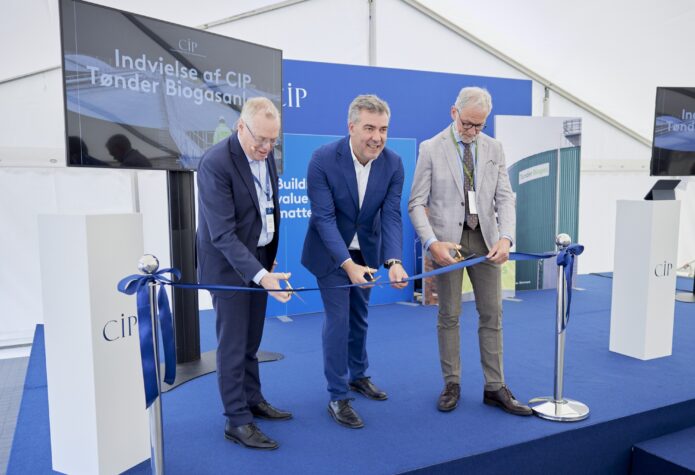
Supplying roughly one-fifth of Denmark’s total biogas demand, a newly inaugurated biomethane plant in West Denmark is poised to become a cornerstone of the national gas grid. “The biogas consumption is around 40% of the total gas consumption. So, this is a large part of the Danish gas infrastructure that we have built here,” says Thomas Dalsgaard, Lead Partner, CIP Advanced Bioenergy Fund.
Green fields and sunbeams cover the landscape in Tønder as I am approaching Denmark’s new biogas plant, where waste is turned into energy. At my arrival, a huge facility meets my eyes, and the atmosphere among the many guests here reflects excitement about the future of sustainable power.
Official opening of Tønder Biogas
The Tønder biogas facility was formally opened on 23 May 2025 in southern Jutland, Denmark, marking the beginning of its commercial operation following many years of development and construction. The plant is designed to convert organic waste into biomethane, which will be injected into the national natural gas network.
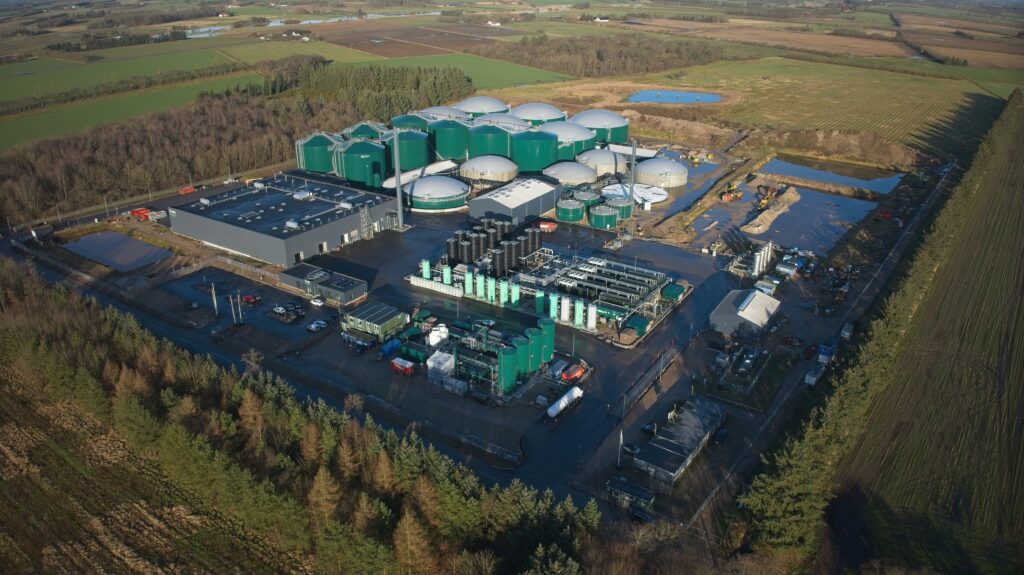
I have come to visit Tønder Biogas, a project part financed by NIB, to see how it is operating in practice. I will also be meeting with Thomas Dalsgaard, Lead Partner at the CIP Advanced Bioenergy Fund, to discuss the financing, scale, and impact.
Copenhagen Infrastructure Partners are the owners of the project, and they will give me a guided tour on the operational capacities and functionalities of the big Tønder Biogas plant.
Tapping into Denmark’s sustainability ambitions, Tønder Biogas aims to demonstrate how clean energy, local agriculture, and energy security can merge into a functioning example of circular economy in action.
Funding renewable energy
NIB supports the project with a loan of 250 million Danish kroner, which is approximately 33.5 million euro. The loan is provided for both the construction and operational phases of the plant.
“Of course, we are happy and appreciative of the collaboration with the Nordic Investment Bank, and it has run smoothly. I think we have had many good dialogues on the plant and on how the financing should be put together,” says Thomas Dalsgaard, Lead Partner, CIP Advanced Bioenergy Fund.
With an expected annual production of more than 41 million normal cubic metres of methane, the facility is intended to contribute to the Denmark’s broader efforts to increase the share of renewable energy in its national supply.
Biomethane for households and agriculture
Provided with safety instructions and dressed in safety gear, we start our guided tour. As we enter the first processing hall, a scent reminiscent of a farm rises from the feedstock and manure awaiting processing. I am being told that the facility, situated on its own without neighbours, does not generate disturbances such as smell, noise, or traffic beyond the site.
“We are in an area where there’s a lot of feedstocks, there’s a lot of manure. The plant already had all the permits obviously, and things it needed are close to the gas grids,” says Thomas.
The facility will use around 930,000 tonnes of biomass annually. The feedstock will consist mainly of manure and waste from industrial processes and will not include energy crops. This feedstock will be converted into biomethane, which is suitable for direct injection into the natural gas grid. The energy produced is estimated to be sufficient for the annual consumption of over 25,000 households.
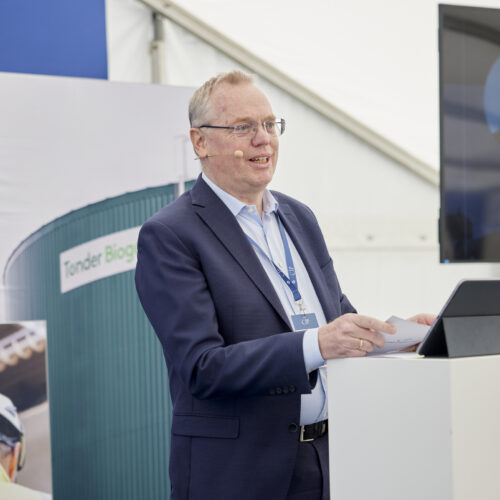
“Of course, we are happy and appreciative of the collaboration with the Nordic Investment Bank, and it has run smoothly. I think we have had many good dialogues on the plant and on how the financing should be put together.”
Thomas Dalsgaard
Lead Partner, CIP Advanced Bioenergy Fund
In addition to energy production, the facility will generate more than 800,000 tonnes of digestate annually. This by-product can be used by local farmers as a fertiliser, creating a connection between energy production and agriculture.
After the tour, I realise how large and complex the operations of the biogas plant are, and I can understand why it is considered one of Europe’s largest. With a facility this size it comes with operational risks that need to be met.
“The key risk lies in feedstock logistics — we manage around 100 lorries daily, each carrying 30 tonnes. It is a complex operation getting feedstock in, keeping the digesters stable at 52°C, and then handling the digestate to ensure it meets farmers’ needs. Both input and output are major logistical challenges,” says Thomas.
Cooperation with farmers and local partners
Tønder Biogas relies on what is happening locally and the work with farmers and other local stakeholders such as lorry drivers, technicians, and suppliers. How important has it been to work with them and how has it looked?
“So, that is of course totally crucial for a plant like this — that we have good collaboration and good partners in the local community: not only the farmers, who deliver the feedstock and receive the digest, but also the municipality, city council, mayor, and everyone involved in the permitting process. Our neighbours and local suppliers — blacksmiths, electricians, and others — are all part of this. We are part of the local community and want to be a good and reliable partner,” explains Thomas.
Construction starts on the Eskilstuna Biogas plant in Sweden
A lot is happening in the biogas sector and not just in Denmark. In Sweden, construction of the Eskilstuna Biogas facility began on 21 May 2025, with NIB attending the opening ceremony. The facility, financed by NIB, will support the circular economy and provide cleaner fuel solutions for buses and ferries. Read more in our press release here.
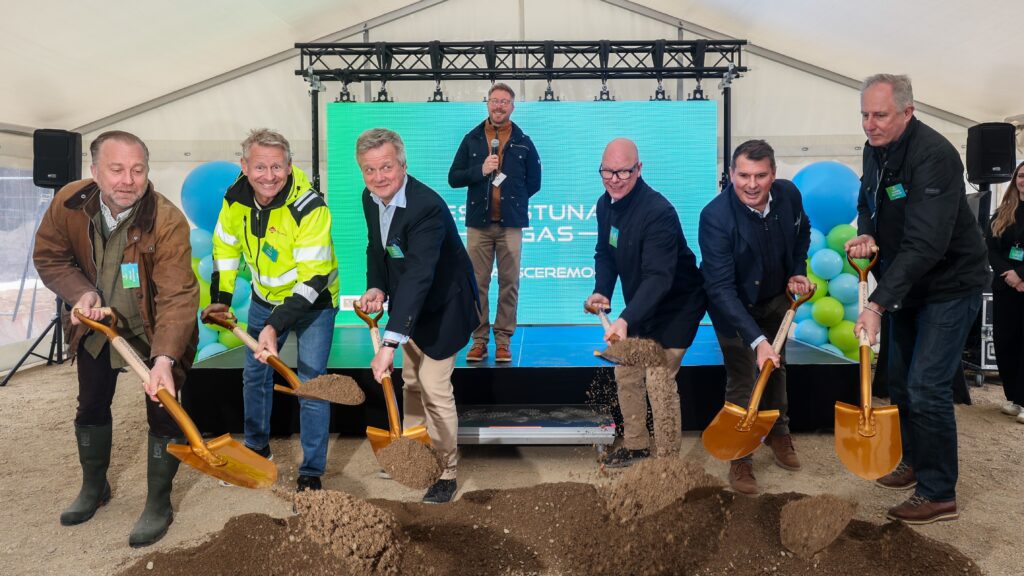
Greenhouse gas emission reduction and carbon capture
By replacing fossil-based natural gas with biogas, the plant’s operations are expected to reduce carbon dioxide emissions by more than 90,000 tonnes per year. A further environmental benefit comes from the capture of more than 48,000 tonnes of liquid carbon dioxide annually. This captured carbon dioxide will be sold to operators involved in the production of synthetic fuels and hydrogen through electricity-based processes.
At the opening ceremony, Thomas emphasised the importance of the project in strengthening energy security:
“Renewable solutions have an important role in reducing emissions and increasing the resilience of the energy system. This project supports the natural gas infrastructure by making the supply more locally based and less dependent on external sources.”
The broader environmental benefits of biogas
Beyond emissions reductions, what do you see as the broader environmental benefits of this model?
“The emission reductions from a biogas plant are much higher than what we normally see from renewables like solar and wind. That’s because manure, when spread on fields, emits a lot of methane — a very potent greenhouse gas. By processing it in a biogas plant, we capture that methane and turn it into energy, which is a major CO₂ saving on top of replacing fossil gas,” says Thomas.
The facility also reduces the need for synthetic fertilisers, improves soil health, and cuts nutrient runoff into waterways. It supports local jobs and offers farmers a sustainable outlet for waste, strengthening country side economies.
“It also helps local biodiversity by reducing nitrate pollution, one of the biggest environmental issues in Denmark and the EU. Biogas supports decarbonisation, environmental sustainability, and energy independence. Some say it’s a niche, but Denmark shows it’s not — we’re already at 40% and heading for 100%. Biogas can be a key part of the EU’s path away from foreign gas,” adds Thomas.
Future-proofing, scalability, and adaptation
Rapid evolving technology, new market tendencies, and different policy conditions may affect how future-proof the biogas plant is. How do you plan for these changes?
“When you look out the window, this is state-of-the-art for biogas in 2025 — you don’t see anything like it elsewhere. I’m extremely proud of what’s been achieved here. But we’re still on a journey of industrialisation and optimisation, and there’s more to come,” says Thomas.
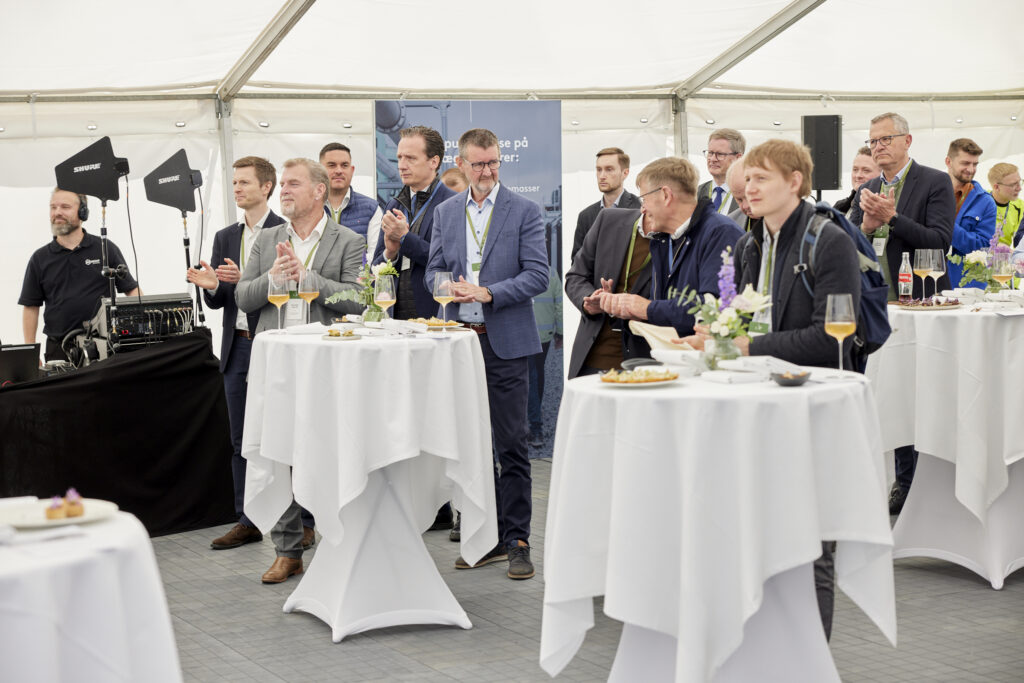
What opportunities do you have to scale up Tønder Biogas?
“The plant may not scale up much more due to feedstock limits, but we expect future add-ons like pyrolysis and hydrogenation to boost production. It’s an ongoing process. As for the gas, we already inject it into the grid here in Tønder and sell green certificates across Europe — from Rotterdam to Valencia. Our off-take is pan-European,” adds Thomas.
Long term impact
Thinking long term, by 2030, what kind of impact do you hope this project will have?
“This shows the way — not just for Denmark, but for all of Europe. This is industrial scale, not farm scale, and it really moves the needle. For us in CIP, it sets a clear benchmark: this is what good looks like. We can bring future partners here and say, it needs to be at least as good as this. That’s crucial when taking biogas to countries where it’s not yet developed,” says Thomas, as I wish him good luck and say goodbye.


